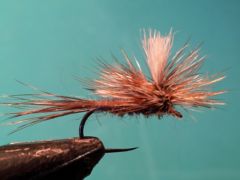Posts Tagged ‘Emergers’
{{start}}
As the pupa or sub-imago of Mayflies, Caddis, Midges, Stoneflies, Dobson flies etc. move to and through the surface of the water to hatch they are referred to as emergers and when large numbers go through this process at the same time it is referred to as a hatch. When fish are feeding on emergers it is important to be fast and accurate in your casting and to match the form and function of the natural. When the naturals are large enough in individual size one very successful technique is to fish an emerger pattern on top as both a fly and an indicator and a nymph or midge pupa suspended just below it. Hits are often on the dead drift or on the lift.
If flies fall into just two basic groups, wets and dries then emergers have to be regarded as dries even though the are typically fished in the surface film.
{{end}}

{{+1}}Epoxy midge – black with hot butt & UV cheeks{{-1}}
{{start}}
When Chironomids are around they tend to be around in large numbers and trout become quickly switched on and gorge on them. There are number of techniques to target chironomid feeders and one of my favourite is to fish three chironomid imitations with the heaviest on the point with a long leader on a floating line and fish relatively static. You will be surprised how many fish find your flies.{{end}}
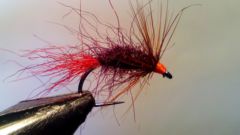
{{+1}}Claret carrot{{-1}}
{{start}}
Based on the design of the carrot fly this version is particularly appealing to fish feeding on emerging Mayfly in Tasmania's central and western lake.{{end}}

{{+1}}Wedge sedge{{-1}}
{{start}}
This is just the simplest imitation of a snow flake caddis laying on the surface of the water. The shape is right and it floats well.{{end}}
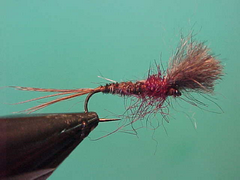
{{+1}}Possum emerger{{-1}}
{{start}}
There are plenty of possum emergers out there. Generally they have a nymph like body and then either a brush type wing or a bud type wing. I like brush type wing emergers better as dense wing traps more air and consequently they float better. The little thorax of seals fur is also good because it sheds water with a flick of the fly.{{end}}
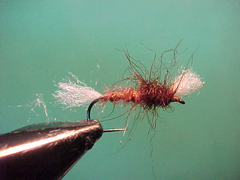
{{+1}}Shipmans buzzer{{-1}}
{{start}}
Shipman's buzzer was tied as a surface fly for Rutlands Reservoir in England. A great buggy looking buzzer that applications anywhere buzzers are emerging.{{end}}
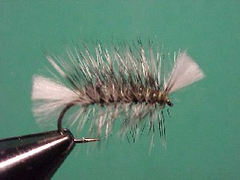
{{+1}}Midge ball{{-1}}
{{start}}
When midges are emerging they emerge in large numbers and fish often feed on them at the exclusion of all other offerings. At times the midges ball up forming dense colonies that roll along the surface of the water and are eagerly targeted by trout.{{end}}
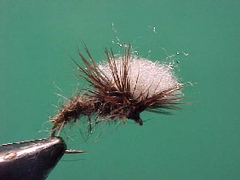
{{+1}}Klinkhammer{{-1}}
{{start}}
This Dutch fly designed for Grayling is one of the best emerger patterns and well suited when fishing to emerging mayflies and caddis. One of the big advantages of this pattern is that it is easily seen on the water because of the poly yarn post.{{end}}
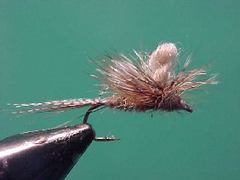
{{+1}}Para dun emerger{{-1}}
{{start}}
This is more of a class of flies rather than just a fly. Perhaps the best known Para Dun Emerger is the Parachute Adams. It was derived form the Adams Irresistible and whilst the Irresistible sits high on the surface film the parachute version sits comfortably in the film making it a very useful emerger pattern.{{end}}














